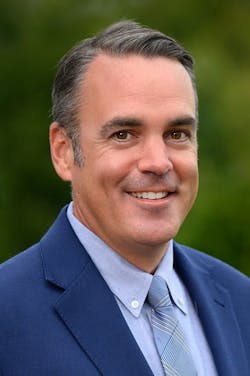Even as a complex combination of challenges is bedeviling the Medicare Shared Savings Program (MSSP), the private health plans contracting with hospitals, medical groups, and health systems in non-government-sponsored accountable care organizations (ACOs) and other contracts, are zooming ahead to “let a thousand flowers bloom,” as the saying goes. As a result, the landscape of value-based care, as unsettled as ever, might be shifting in some key ways.
What exactly is going on? Well, under the previous administration, Seema Verma, the Administrator of the Centers for Medicare & Medicaid Services (CMS), especially in her final year in that post, had become increasingly vociferous in her pronouncements, demanding that more and more providers participate in two-sided risk in the MSSP, as she and others in the previous administration had decided that the MSSP program needed to be a key element in the Trump administration’s push to shift more providers into downside risk. But Verma’s forcefulness seemed to be having the opposite effect, as ACO associations and other provider associations pushed back consistently during 2019 and 2020, insisting that some of the benchmarks in MSSP needed to be modified if large numbers of providers were not to flee the program.
In contrast, private health plans, which have tremendous flexibility in how they can shape the terms of value-based contracts, have been offering providers the flexible terms they simply cannot get from the MSSP program; and as a result, more and more hospital, medical group, and health system leaders have been moving forward with their health plan partners into increasingly enmeshed value-based contracting.
“There is fundamental agreement that the fragmented fee-for-service system can lead to poor outcomes, and that aligning incentives within value-based payment models can improve quality, equity, affordability, and access,” says Danielle Lloyd, senior vice president, private market innovations and quality initiatives, at the Washington, D.C.-based AHIP (America’s Health Insurance Plans), the association representing most private health plans in the U.S. “And the payers have shown a really great commitment to this journey of moving from volume to value. Early on, this was about demos and pilots and such, but it’s not that anymore; it’s fundamentally woven into the fabric of our healthcare system at this point, and we don’t see any turning back. There’s some nuance there, but fundamentally, health insurance providers are moving from volume to value. Since the ACA [Affordable Care Act] passed, there are now 36 million people in ACOs or covered by value-based payment,” she says, and points to data from recent reports published by the Health Care Payment Learning & Action Network (HCPLan) in the past two years. “In 2019, 38.2 percent of U.S. health care payments, representing approximately 216.4 million Americans and 72.5 percent of the covered population, flowed through Categories 3 and 4 models,” the 2021 report noted, referring to the most advanced value-based payment models, including population-based payment models. Indeed, the fact that 40.9 percent of payments by health plans to providers were in categories 3 and 4, the most advanced categories, already in 2020 (based on a survey that covers 80.2 percent of all managed care-covered lives in the U.S. healthcare system), speaks to the broad progress being made in alternative payment mechanism (APM) adoption.
Interestingly, in that report, health plan executives surveyed said that the three biggest barriers to APM adoption remain “provider willingness to take on financial risk,” “provider ability to operationalize,” and “provider interest/readiness.” Meanwhile, those same health plan execs see the top three facilitators to APM adoption as “health plan interest/readiness,” ‘provider interest/readiness,” and “government influence.”
Providers flourishing in private health plan-based contracting
As it is, numerous hospitals, medical groups, and health systems are flourishing when it comes to collaborating with private health plans. Even as they participate in the MSSP program, the leaders at the nine-hospital, Indianapolis-based Community Health Network, have also been continually expanding their private-payer collaborations, confirms Patrick McGill, M.D., the integrated health system’s executive vice president and chief transformation officer. “We’ve been expanding into direct-to-employer contracts” as well, McGill notes. “We just launched one this year with the City of Fishers (an Indianapolis suburb). “That was the product of a couple of years of relationship development; and we’ve also been looking at developing some narrow-network types of products to really align patients to the health system.”
The key point, says McGill, who also continues to practice as a family physician, is the learnings that are continuously being gained from participating in a variety of value-based contracts with private payers. We’ve got over 200,000 patients either cared for under the MSSP, under two-sided Medicare Advantage contracts, or value-based contracts with Anthem, Humana, and Aetna; Anthem is the primary player here.”
The crucial difference between the MSSP program, in which CMS essentially sets the terms of all contracts, as it needs to, and the private plan contracts, is that, “On the commercial side, with the shared-savings contracts, it allows for a different conversation, because you’re able to focus on what services are needed by the patients, including social determinants of health needs like transportation; and you’ve got partnerships in terms of care management,” McGill says.
What’s more, a lot has been learned during the past two-and-a-half years of the COVID-19 pandemic, says Melanie Matthews, CEO of the Olympia, Wash.-based PSW, a Population Health Company (formerly known as Physicians of Southwest Washington). Matthews says that the pandemic has had a significant impact on the value-based contracting landscape, along multiple dimensions. For one thing, she says, “Any structures that accountable care organizations had in place allowed those ACOs to learn to understand their populations that fee-for-service payment simply doesn’t. When you’re in an ACO, you have the claims and clinical data to identify members, beneficiaries, members, who might need additional support.” And, during the pandemic, she says, “We’ve been able to do things like making sure that our diabetics were getting their insulin and also were consuming healthy meals. The ACOs had infrastructure and experience, including around social isolation and social determinants.”
What’s more, says Nick Herro, a principal in The Chartis Group, a Chicago-based consulting firm, when it comes to multispecialty groups, “The physician practices that have pivoted to risk being a basis of their business are investing heavily in care managers, data analytics experts, people who can support the physicians broadly, to drive outcomes for their patients. And you see a robust investment in technology and infrastructure. You get better data on the member, and get ahead of events for the patient,” Herro says. “That’s the business model. And you see public companies like Oak Street that are investing hundreds of millions of dollars in this,” referencing disruptor organizations like Oak Street Health, the Chicago-based population health management company that, like a number of others, is moving private value-based care delivery forward by advancing its care models in the private healthcare market.
Meanwhile, Matthews says, “Because of our capitated payments, we were able to advance payments to our providers during a time of significant revenue reduction. So capitation is both good from a care management perspective and from a revenue perspective.” And the pandemic, she says, has proven that “the capitated, ACO model is the right approach. The pandemic showed us how dependent on volume providers are in the fee-for-service world.”
Matthews’ statement on capitation as the ultimate vehicle for progress finds support in some of the literature around APMs. For example, in a whitepaper entitled “The Math of ACOs,” published in August 2020, and authored by Nikhil R. Sahni, Rachel Groh, and David Nuzum of the McKinsey management consulting firm, and Michael Chernew, Ph.D., of Harvard Medical School, the authors write that, “In most ACO models (including those adopted by CMS for the Medicare FFS program), the ACO’s benchmark is reset for each performance period based (at least in part) on the ACO’s performance in the immediate prior year. This approach is commonly referred to as ‘rebasing.’ The main criticism of this approach toward ACO model design—which is also evident in capitation rate setting for Managed Care Organizations—is that ACOs become ‘victims of their own success’: Improvements made by the ACO in one year lead to a benchmark that is even harder to beat in the following year. The corollary is also true: An ACO with ‘excessive’ costs in Year 1 may be setting themselves up for significant shared savings in Year 2 simply by bringing their performance back to ‘normal’ levels.”
Indeed, those authors note that, even as the MSSP program has shifted to multi-year baselines, its benchmarks remain intimidating enough that provider leaders remain anxious for their future in that program, as they see the challenges of continuously improving their MSSP performance. In that regard, could private health plans potentially be the saviors of the ACO concept, because of their greater flexibility in contracting terms?
Even setting aside benchmark-related issues, and looking at payer-provider collaboration over time, provider leaders say that their contracts with private health plans really have become fruitful over time. That’s certainly true at the Scottsdale, Ariz.-based HonorHealth, where James Whitfill, M.D. is senior vice president and chief transformation officer.
“Now that we’ve spent six or seven years ingesting claims-based analytics across all the different APM products, we’ve become much better at being able to look across the entire population, but also explain to our colleagues what we’re looking at. We have to coach them on what’s going to be very reliable, versus what’s going to be directional,” Whitfill says. One of the keys has been physicians coming to accept physician performance data, as the data is validated and made more and more useful, he adds.
As Chartis’s Herro puts it, “At the end of the day, this isn’t rocket science. Previously, the payment infrastructure wasn’t there; but now it’s there; and the technology and data are there. You just need physicians or leaders to commit to it and arrange the pieces, and you, too, can do it. And every major primary care practice in Florida is now following that model,” he notes, “and they’re reaping the benefits of it.”
Many provider leaders believe that the only way is forward into uncharted waters, with the alternative being massive payment cuts to physicians and hospitals under Medicare. “Either we will need to reduce care, reduce payment—meaning cutting payment rates under fee-for-service—or we’ll need to get really good at providing care at the right level, in the right place, in the right time,” Matthews says. Indeed, she says, as the U.S. healthcare system heads closer to a devastating cost cliff, a care management-based approach will prove to be the only way forward.


